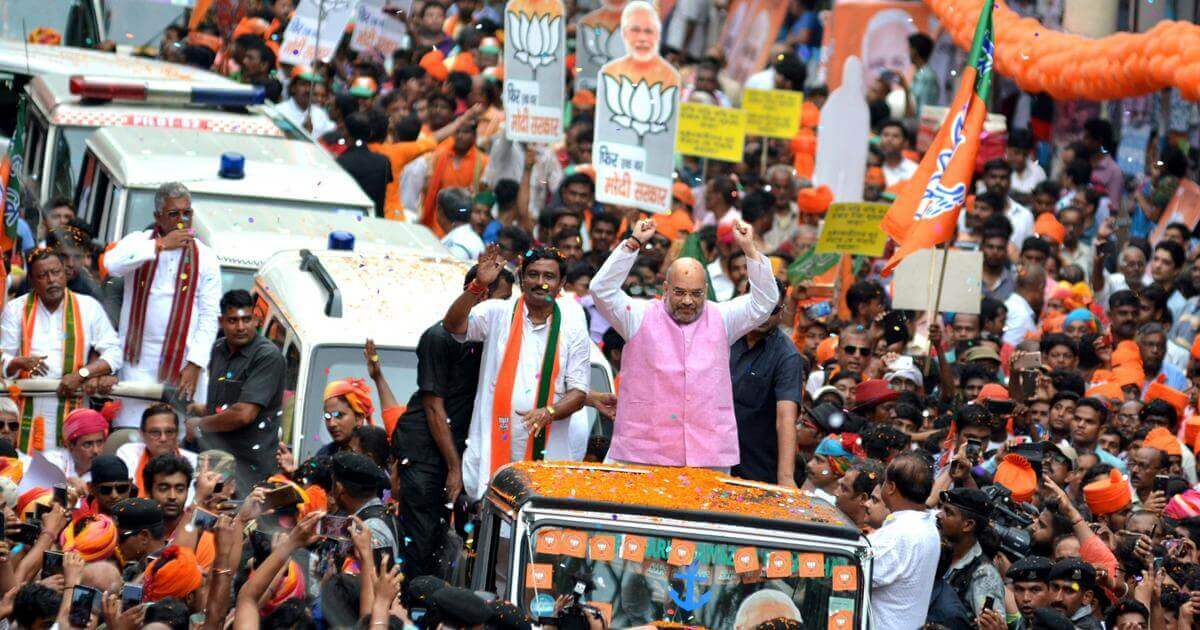“Today, if one language can do the work of uniting the country, then it is the most spoken language, Hindi,” said Home Minister Amit Shah on September 14. Against a backdrop of stoking nationalist fears and insecurities, Shah said Hindi should reach “every individual and every home”, imploring citizens to learn and speak Hindi to protect the cultural and moral fabric of India which he says is under siege by Anglicization.
Granted, Hindi is the most spoken language in the country, but this is more a product of design, rather than choice, under the Three Language Formula–enacted in 1968–which mandates the teaching of Hindi in non-Hindi states, alongside English and a regional language.
Under this policy, between 2001 and 2011, Hindi gained 25%, or 100 million, new speakers. Even in the five South Indian states, Hindi speakers grew by 161% from 1971 to 2011, and nearly doubled in Tamil Nadu from 2001 to 2011 despite severe opposition to the language in the state. Thus, this threat to Hindi and call to arms is purely fabricated, and appears to be yet another populist move by the BJP in order to magnify even non-existent fragmentations in Indian society. In addition, the three-language-formula artificially supports the argument for Hindi as the national language by forcing non-native Hindi speakers to learn the language.
Shouldn’t India’s national language be one that the majority of people consider their native language?
The 2011 Language Census reveals that, even after the broad categorization of Modern Standard Hindi with 56 other closely related dialects–such as Bhojpuri, Rajasthani, Chattisgarhi, Haryanvi, and Marwari–only 43.64% of Indians speak Hindi as their native language, with this figure dropping to just 26% when considering the percentage of Indians who speak Modern Standard Hindi. More saliently, roughly 40% of Hindi speakers have a native language other than Hindi.
How then can Hindi unify India when it is not even the native tongue of the majority of Indians?
Hindi is the native language of citizens in northern and central India, and thus by describing Hindi as a unifying force, the government ‘others’ non-Hindi speakers and states, and frames Hindi speakers and states as the ideal and norm. By redefining and re-establishing a new threshold for what it means to be Indian, the BJP creates divisions in the cultural and moral fabric of India while professing to challenge them.
But, if not Hindi, then what?
While there are significant Bengali, Marathi, Telegu, Tamil and Gujarati speakers, the percentage of Indians who speak these languages pales in comparison to Hindi. Moreover, making any one of these languages the official national language would be playing into regional politics to an even greater degree than making Hindi would; there are very few speakers of these languages outside of the state boundaries of Bengal, Maharashtra, Andhra Pradesh, Telangana, Tamil Nadu, and Gujarat.
English, then?
By design or by choice, English is the lingua franca of the world, and helps India and Indians connect with the world more efficiently and seamlessly from the standpoint of trade, employment, and diplomacy. However, it isn’t an Indian language, and making a colonizer’s language the national language leaves a sour taste in the mouth and callously ignores the historical connotations associated with it.
That being said, English can be a common language between all the states as it does not favour any one region of India. Thus, English presents a strong argument to be made the 2nd language, similar to Tamil Nadu’s two language policy of Tamil and English.
However, if English should be the 2nd language, what then should India’s first and national language be? Might it make more sense to have no national language at all?
India requires a more versatile language policy which considers the unique needs of each state.
A two language policy limits citizen mobility and damages citizens’ connections with their heritage state. For instance, under a two language policy, a Gujarati family living in Tamil Nadu over multiple generations may lose the cultural link with Gujarat that language provides.
Hence, it might make more sense to have a three-language-policy of English, the official state language, and one Indian language of a citizen’s choosing. While this somewhat mimics the current three-language-formula present in most states, it also borrows from the Tamil Nadu model, as it would not make learning Hindi mandatory unless you happen to live in a Hindi-speaking state. In addition, it encourages assimilation as citizens are required to learn the local language, while also affording them the opportunity to maintain cultural and regional links with their heritage state by learning a third language.
This modification of the three-language-formula guards against the ‘gatekeeping’ nature of the existing formula, by expanding and diversifying the threshold of what it means to be Indian. Logistically, however, this is hard to achieve as there may be insufficient staff who are trained to teach several Indian languages.
Ultimately, the link between the national language and national unity is tenuous at best and ignores the fact that unity can be achieved through a celebration of differences rather than uniformity. Being multilingual, regardless of which languages one speaks, is something to be cherished as it encourages the maintenance of India’s rich and diverse tapestry.
Thus, the struggle for a more inclusive and tolerant India goes on.
If Not Hindi, What Should India’s National Language Be?
The ruling government wants Hindi to reach “every individual and every home”.
November 5, 2019

IMAGE SOURCE: PRAVEEN JAIN / THE PRINTHome Minister Amit Shah
